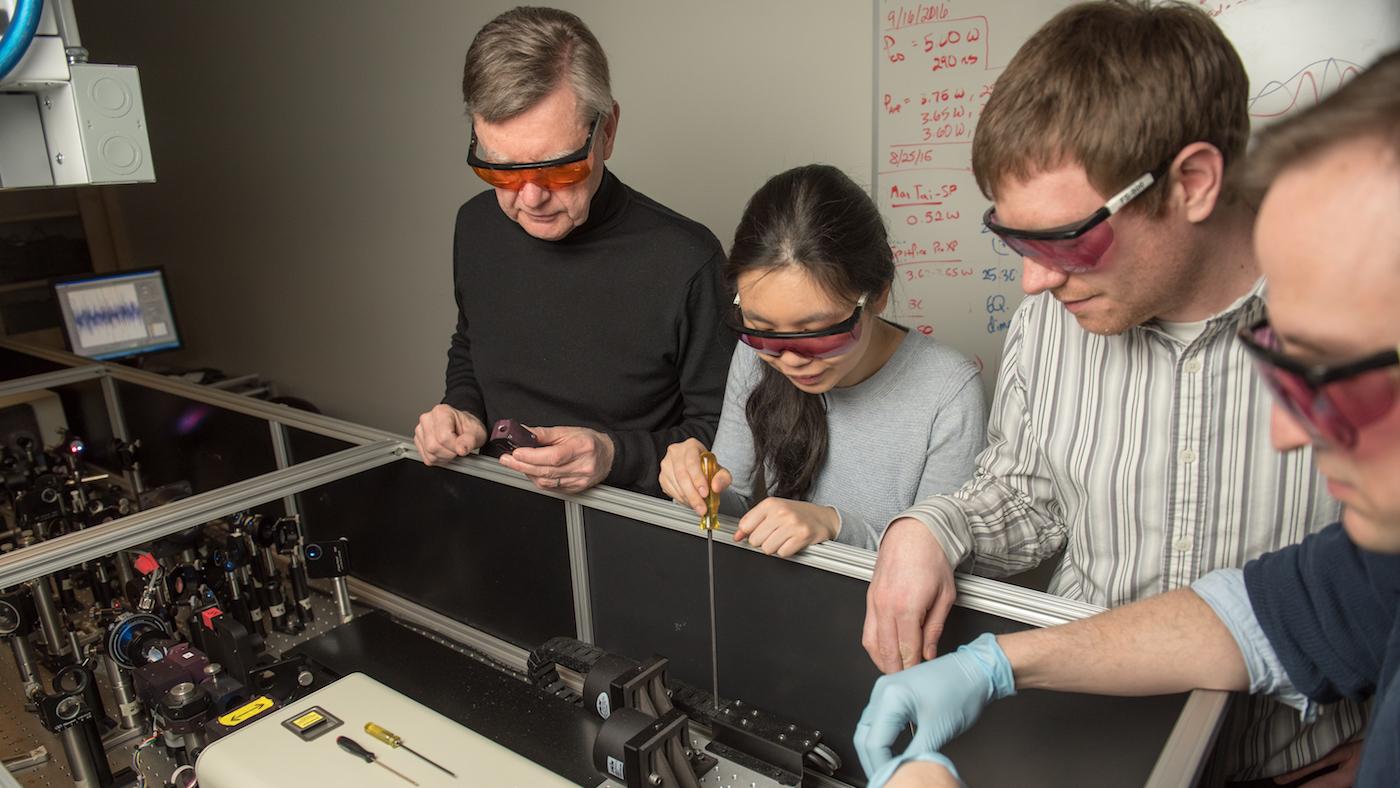Who Are the 12 Men Who Walked on the Moon?
Meredith Francis
July 22, 2019
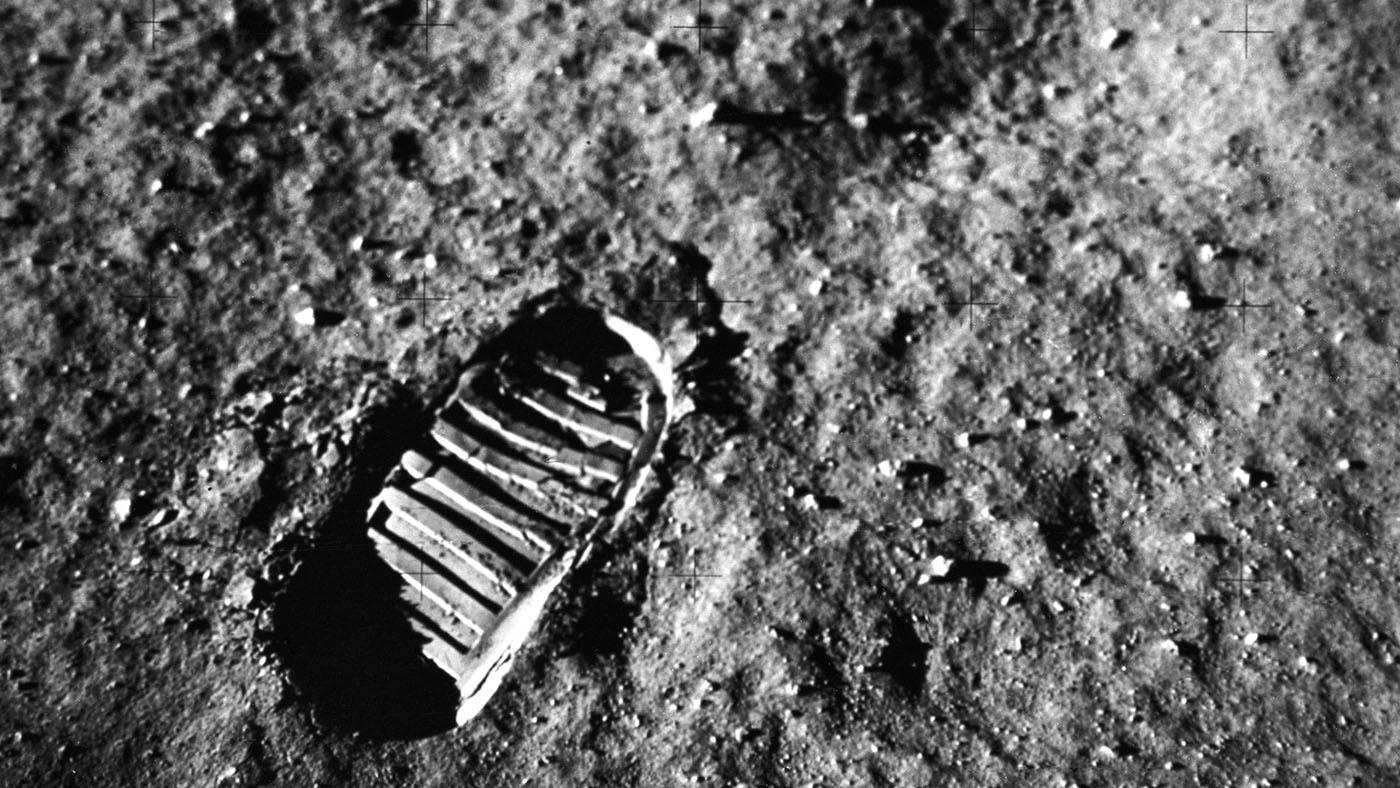
In the summer of 1969, Neil Armstrong and Buzz Aldrin became household names as the first people to walk on the moon. Despite the enthusiasm and ticker-tape parades around the world that greeted the Apollo 11 crew on their return to Earth, excitement quickly dwindled for Americans returning to the moon.
After Apollo 11, ten other astronauts—all men—walked on the moon between 1969 and 1972. (Sally Ride, the first American woman to go to space, didn't get there until 1983.) You might know Armstrong’s famous first words from the moon and Aldrin’s big personality, but what about the others? Among them are many test pilots, a man who overcame dyslexia, one who believed in UFOs, and another who subscribed to creationism.
1. Neil Armstrong
Neil Armstrong began his career as a naval aviator and became a test pilot after college. He joined NASA in 1962, and established himself as a talented pilot who could stay cool under pressure with the Gemini 8 mission, where he was able to save himself and his fellow crew member David Scott when the spacecraft went into a dangerously fast roll.
Armstrong served as the commander of Apollo 11 and was the first man on Earth to step foot on the moon, uttering his famous phrase, “That’s one small step for man, one giant leap for mankind.”
After the mission, he announced that he would retire from space travel and taught at the University of Cincinnati until 1980. Armstrong made few public appearances, his family calling him a “reluctant American hero.” He died on August 25, 2012 in Cincinnati following complications from a heart bypass surgery.
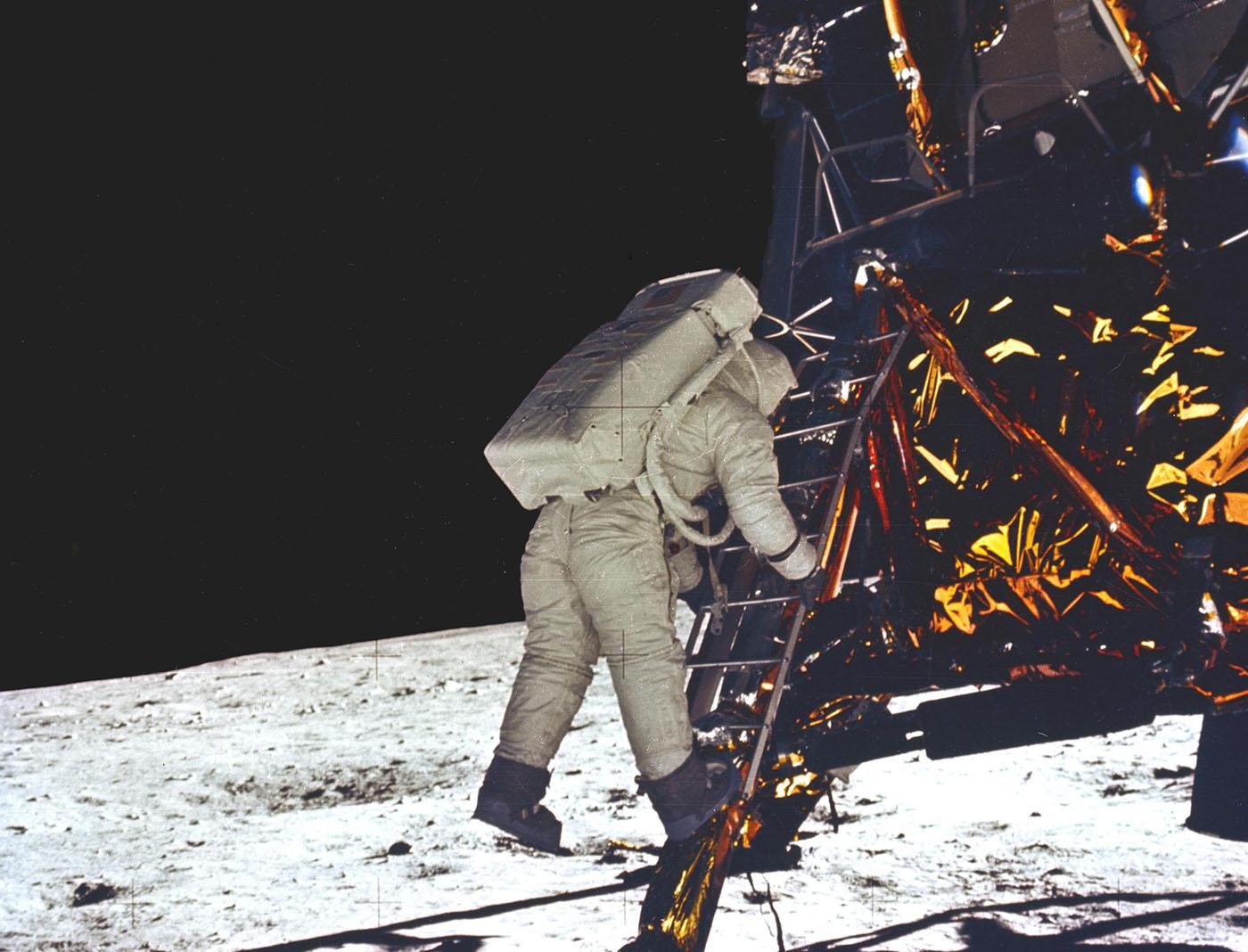 Buzz Aldrin descends the lunar module and prepares to take his first step onto the moon. Photo: Courtesy of NASA
Buzz Aldrin descends the lunar module and prepares to take his first step onto the moon. Photo: Courtesy of NASA
2. Buzz Aldrin
Edwin “Buzz” Aldrin is known for having a personality roughly the size of the moon. He started out as an Air Force pilot and later wrote his doctoral thesis at MIT on “manned orbital rendezvous,” which happens when two spacecrafts enter the same orbit and approach one another.
Aldrin was originally denied entry into NASA’s astronaut program since he had no experience as a test pilot. He was eventually accepted, becoming the second man to step foot on the moon. He retired from NASA in 1972 and took on various roles, including servings as a commandant at the Air Force Academy and studying improvements in space technology.
He has been open about his struggles with alcoholism and depression. While Neil Armstrong was known for his cool demeanor, Aldrin was known to be lively. In 2002, a conspiracy theorist harassed him on the street, trying to get Aldrin to confess that the moon landing was a hoax. At age 72, Aldrin punched the man in the face. At 89, he is still alive to see the 50th anniversary of the Apollo 11 landing in which he played a vital role.
3. Pete Conrad
Pete Conrad had to overcome dyslexia to become an astronaut. During the 1930s and 1940s, when Conrad was a child, not much was known about the disorder. But he excelled in math and science, and eventually got an aeronautical engineering degree from Princeton, going on to become a Navy test pilot and flight instructor.
Conrad was part of the initial selection process for NASA astronauts in 1959, but wasn’t fond of the invasive psychological and physical examinations. He was not accepted into the first group of astronauts, but later joined in 1962. Conrad set the space endurance record at the time, spending eight days in space during the Gemini 5 mission. He went on to command Apollo 12, becoming the third man to walk on the moon. His first words there were, “Man, that may have been a small one for Neil, but that’s a long one for me,” making light of his shorter stature. Conrad retired from NASA in 1973 and worked in the private sector. He died in 1999 in a motorcycle crash, 30 years after Apollo 12.
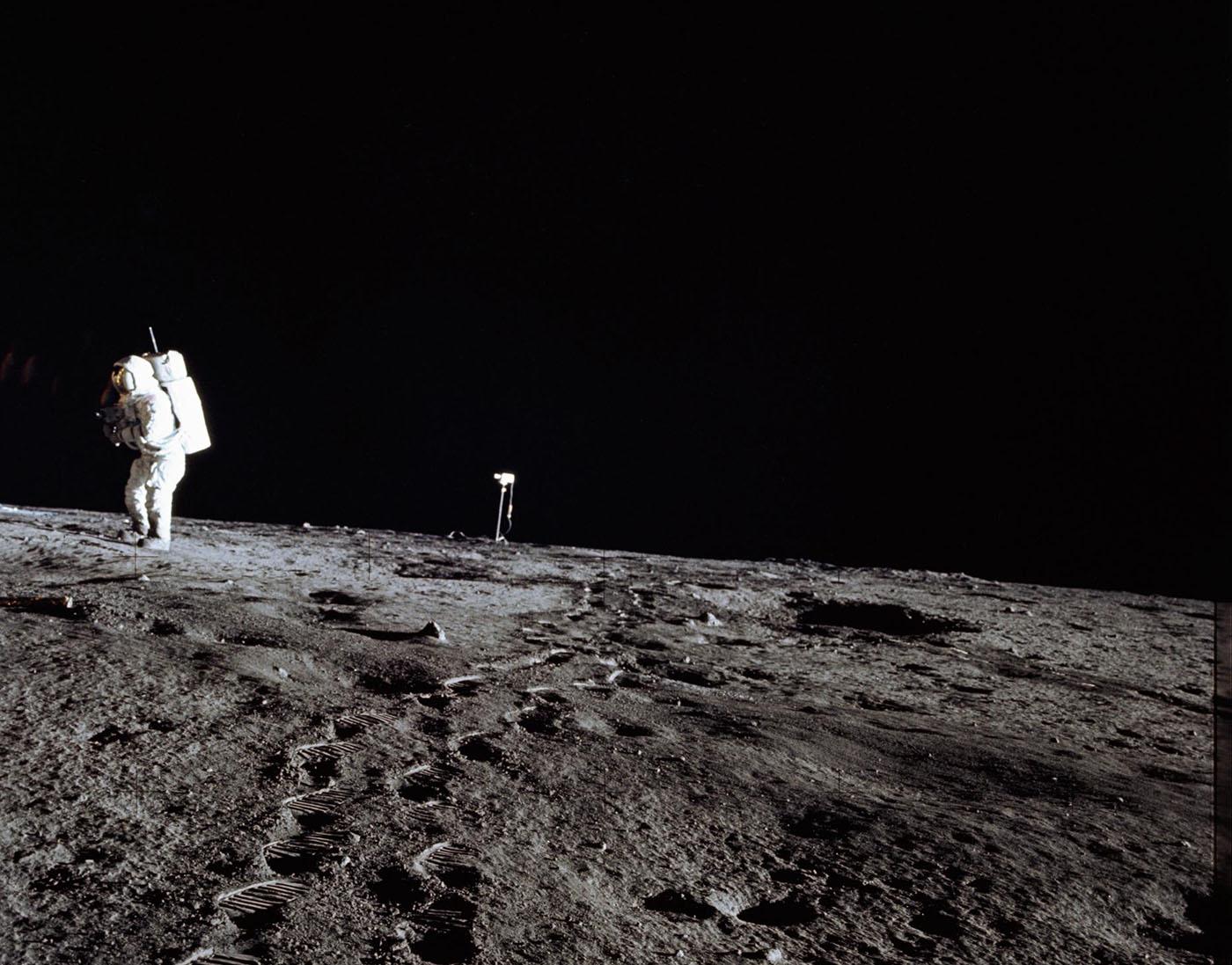 Paintings by Alan Bean, pictured here, of his time on the moon were once displayed in the Smithsonian National Air and Space Museum. Photo: Courtesy of NASA
Paintings by Alan Bean, pictured here, of his time on the moon were once displayed in the Smithsonian National Air and Space Museum. Photo: Courtesy of NASA
4. Alan Bean
Alan Bean got his start like many of the other astronauts—as a test pilot for the U.S. Navy. He joined NASA in 1963 and piloted the lunar module for Apollo 12. He also served as the commander of Skylab 3—NASA’s first space station.
Bean took a different approach to retirement from NASA than other astronauts. He became a painter, portraying his experience on the moon and the views of Earth. There’s even an online gallery of his art. Bean used moon dust from his space suit to give the paintings texture. He died at age 86 in 2018.
5. Alan Shepard
Alan Shepard was the sixth man and the second Alan to walk on the moon. By then he had already made history as the first American in space, aboard Freedom 7 in May 1961. That entire flight was just 15 minutes and launched only 116 miles above Earth, but it was a milestone for the American space program.
With his background as a test pilot, Shepard was originally selected to be on the first Gemini mission following his flight on Freedom 7. Unfortunately, he woke up one day with an inner-ear disease that caused dizziness and nausea and was removed from the mission. He then took over as Chief Astronaut of NASA, overseeing training and missions of all NASA astronauts.
Shepard eventually had a surgery that fixed his inner ear problem and was chosen to be commander of Apollo 14 in 1971. Shepard was actually chosen to be a part of the ill-fated Apollo 13 mission, but NASA wanted to give him more time to train because of his inner-ear recovery. At the time of his lunar landing, Shepard was 47 and the oldest person to have walked on the moon. He was also the one who hit two golf balls across the lunar surface. After Apollo 14, Shepard continued serving as Chief Astronaut. He retired to the private sector in 1974. Shepard died of leukemia in 1998.
6. Edgar Mitchell
In addition to taking him to the moon, Apollo 14 took Edgar Mitchell to supernatural places. He grew up in New Mexico and learned to fly at age 13, eventually becoming a test pilot for the Air Force.
Mitchell worked on the mission operations team for Apollo 13, helping to problem-solve after an oxygen tank exploded two days into the mission. President Nixon awarded Mitchell the Presidential Medal of Freedom in 1970 for that service. During Apollo 14, Mitchell and Shepard explored the lunar surface for 33 hours, collecting over 90 pounds of rock samples.
On his return to Earth, Mitchell claimed he had an experience where he felt connections in the universe. Following his career at NASA, he expressed interest in studying consciousness, paranormal experiences, and UFOs. He founded the Institute of Noetic Sciences, a group aiming to understand “the interconnected nature of reality through scientific exploration and personal discovery,” according to its website. In a 2008 interview, he said he believes that Earth has been “visited” and that UFOs are real. Mitchell died in 2016, on the day before the 45th anniversary of his moon landing.
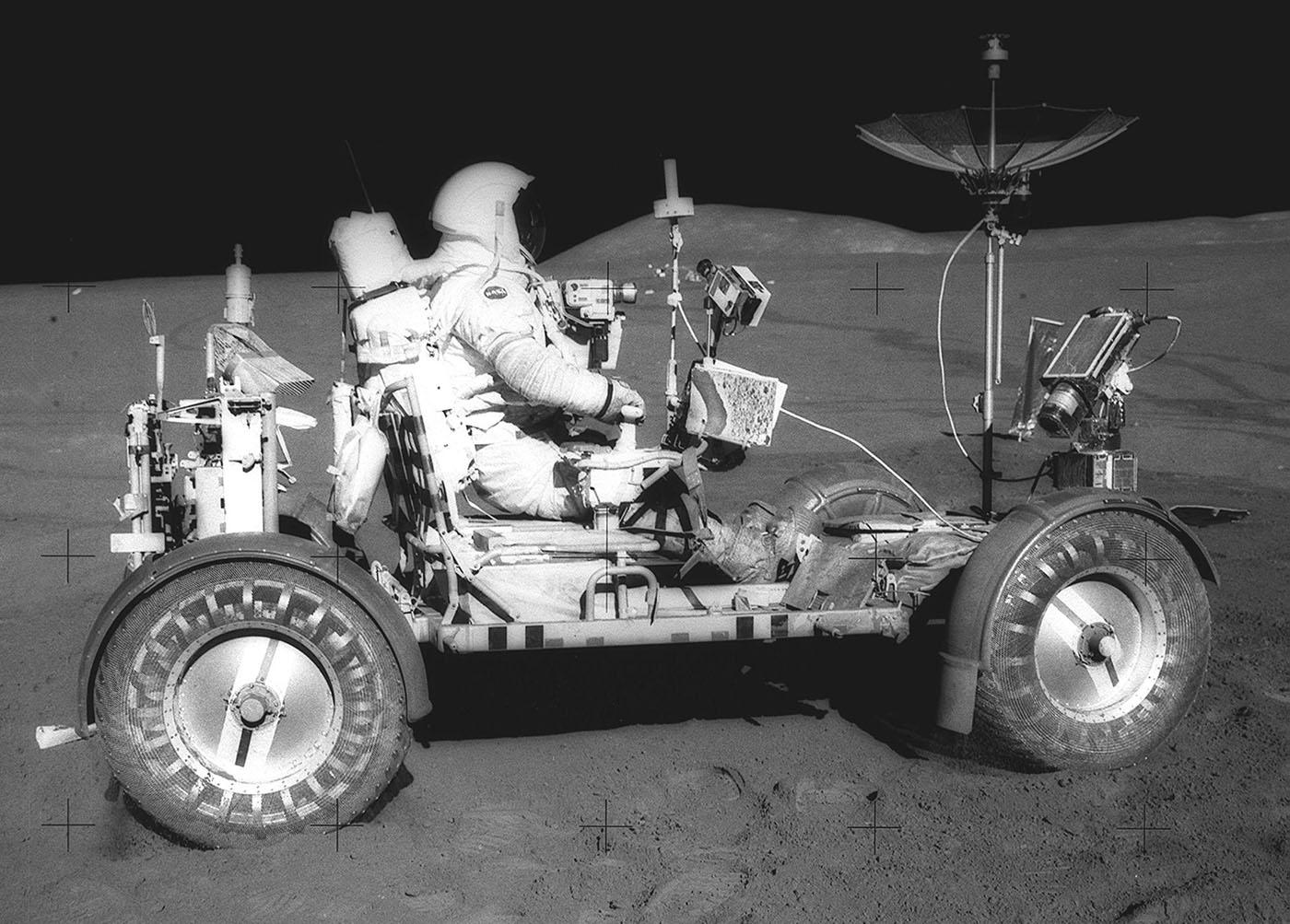 David Scott gets ready to drive the lunar roving vehicle on Apollo 15, which was the first mission to use that vehicle. Photo: Courtesy of NASA
David Scott gets ready to drive the lunar roving vehicle on Apollo 15, which was the first mission to use that vehicle. Photo: Courtesy of NASA
7. David Scott
After flying high, it was stamps, of all things, that brought David Scott back down. Scott was a graduate of the military academy at West Point and an Air Force test pilot. He made a name for himself at NASA aboard the Gemini 8 mission, where the spacecraft he and Neil Armstrong were in experienced a harrowing roll of one revolution per second.
NASA chose Scott to command Apollo 15 in the summer of 1971. This was the first mission that used the lunar roving vehicle (LVR), which covered 17 miles of the moon’s surface. Scott also conducted a live demonstration for television where he dropped a hammer and a feather at the same time. On Earth, a hammer would fall faster than a feather, but on the moon, they fell at the same rate because they were in an airless vacuum. This confirmed Galileo’s theory that all objects fall at the same rate regardless of mass.
But the Apollo 15 astronauts got into some trouble after their return to Earth. The three astronauts carried nearly 400 unauthorized postal covers (a special type of commemorative envelope) to the moon’s surface in exchange for payment from a German stamp dealer, who could sell them as rare items that had been in space. NASA reprimanded the Apollo 15 crew and they never returned to space. Scott is the only current living commander of an Apollo mission.
8. James Irwin
James Irwin was probably the only Apollo astronaut who subscribed to creationism. He was born in Pittsburgh, graduated from the Naval Academy, and became a test pilot. In 1961, a student pilot crashed a plane while Irwin was training him. Irwin suffered compound fractures and almost lost his leg.
He went on to NASA in 1966 and joined David Scott and Alfred Worden on Apollo 15, joining in the postal cover scandal as well.
After his time at NASA, Irwin became a devout Christian. In his 1983 book, More than Earthlings, Irwin wrote that he believed the creation story in the Book of Genesis was factual history. Irwin later suffered three heart attacks. The third proved fatal and he died in 1991 at 61.
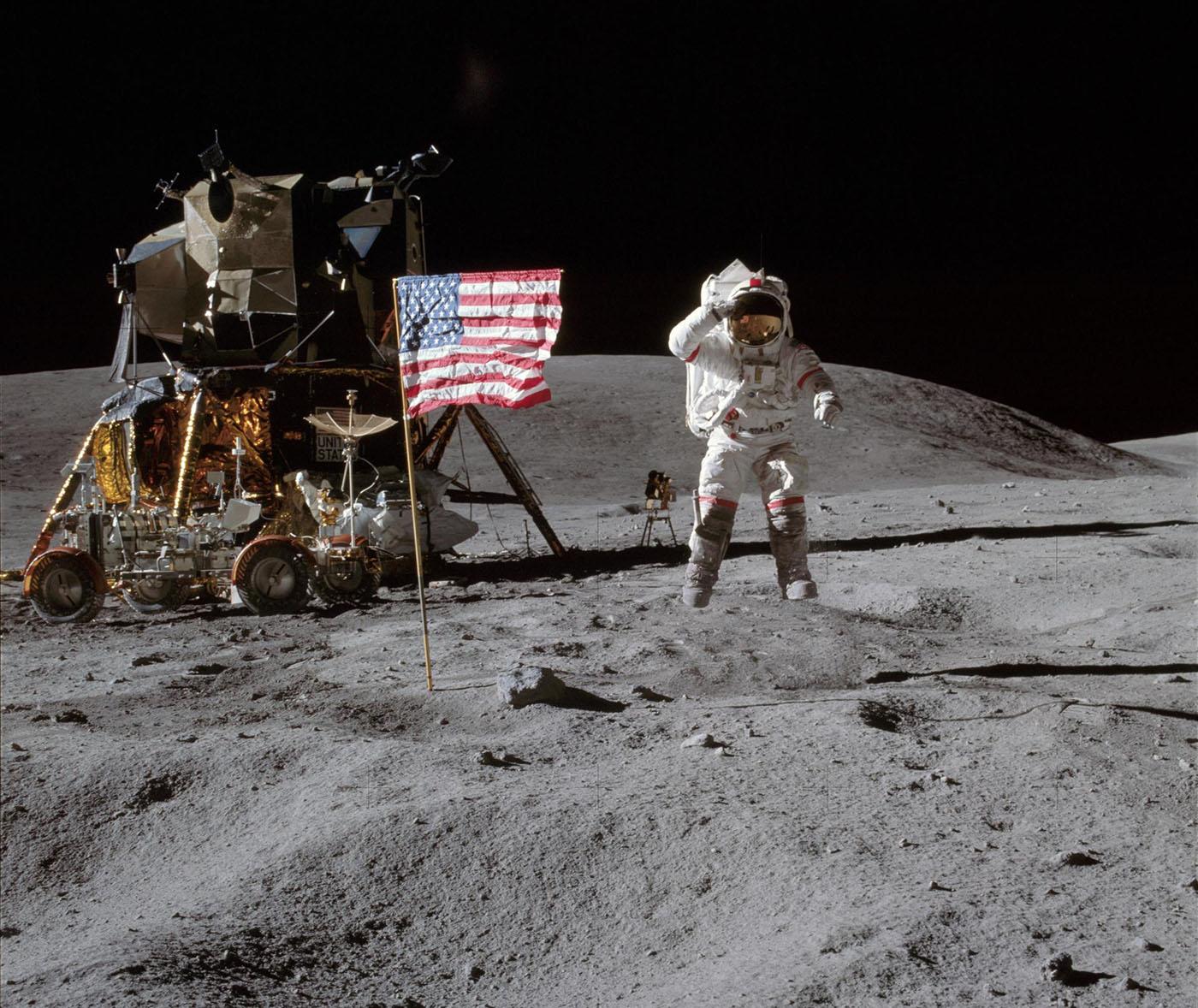 John Young leaps off the lunar surface as he salutes the American flag on the Apollo 16 mission. Photo: Courtesy of NASA
John Young leaps off the lunar surface as he salutes the American flag on the Apollo 16 mission. Photo: Courtesy of NASA
9. John Young
John Young had a 42-year-long career at NASA, flying six space missions and spending 835 hours in space. Born in San Francisco and growing up in Georgia and Florida, he eventually became a Naval test pilot before heading to NASA.
Young was the pilot of Gemini 3, the first crewed Gemini flight. He snuck a corned beef sandwich onto that spacecraft, earning a reprimand from NASA. He also served on the Apollo 10 mission, flying to the moon and back in preparation for Apollo 11. He became the ninth man to walk on the moon in April 1972 as commander of Apollo 16.
He also headed the Space Shuttle Branch of NASA, and became Chief of the Astronaut Office after Alan Shepard. If that wasn’t a long enough resume, he flew two missions on the Space Shuttle Columbia in the early 1980s. He retired from NASA in 2004, and died in 2018 at the age of 87.
10. Charles Duke
Born in North Carolina and raised in South Carolina, Charles Duke was another graduate of the Naval Academy. He joined NASA in 1966, first serving as CAPCOM for Apollo 11—meaning he was the voice the astronauts heard.
He was the backup pilot for the lunar module for Apollo 13, but caught measles and exposed the main crew to the disease. Ken Mattingly, who was the command module pilot, didn’t have immunity, so he was bumped from the disastrous flight and replaced by Jack Swigert. Mattingly would go on to serve on Apollo 16 with Duke and Young.
During the Apollo 16 mission, Duke became the youngest man to visit the moon, at age 36, and left a photograph of his family—his wife and two sons—on the lunar surface. He is currently 83 years old.
11. Gene Cernan
Gene Cernan was the last man on the moon. He was born in Chicago and grew up in the suburbs of Bellwood and Maywood. After serving as a Navy pilot, he joined NASA for the Gemini and Apollo programs. During the Gemini programs, Cernan was among the earliest astronauts to leave a spacecraft and perform an extravehicular activity, or EVA. He also served with fellow moonwalker John Young on Apollo 10.
He was commander of Apollo 17, where he and Harrison Schmitt conducted three EVAs. (For reference, Apollo 11 had just one EVA.) Most of their twenty-two hours on the lunar surface was spent collecting rock samples. Since Cernan boarded the lunar module last, he’s the most recent person to have walked on the moon. Like Neil Armstrong, he was a graduate of Purdue University, giving that school the right to claim both the first and the last man on the moon. Cernan retired from NASA in 1976 and worked in the private sector. He died in 2017 at the age of 82.
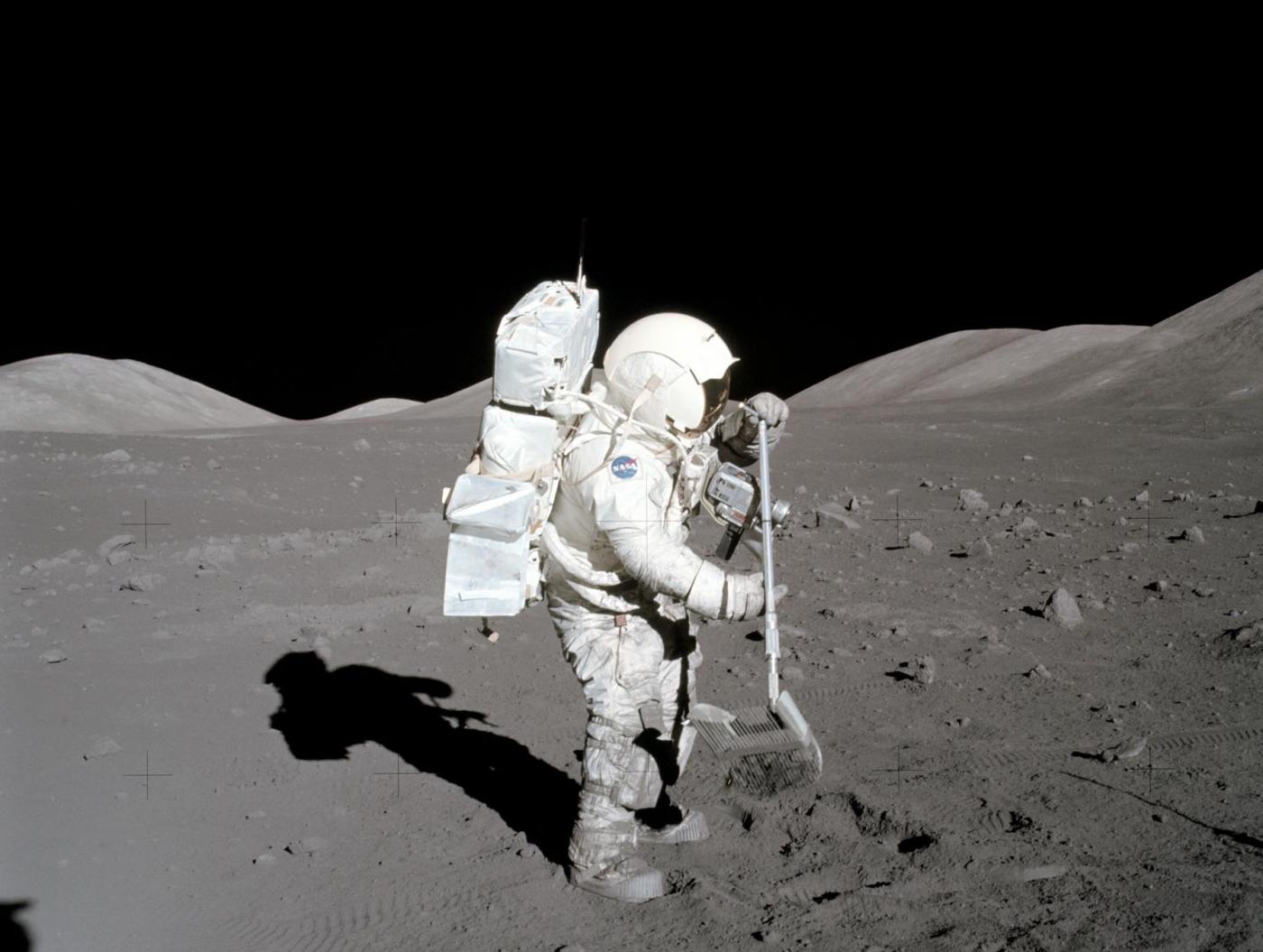 While most Apollo astronauts had experience as test pilots, Harrison Schmitt was the first geologist on the moon. Photo: Courtesy of NASA
While most Apollo astronauts had experience as test pilots, Harrison Schmitt was the first geologist on the moon. Photo: Courtesy of NASA
12. Harrison Schmitt
Harrison Schmitt is one of the few men to walk on the moon who was not a test pilot with a military background—he was actually a geologist. Prior to NASA, he worked at the U.S. Geological Survey’s Astrogeology Center in Arizona. He also helped to train Apollo crews in geology and analyzed samples from the moon.
He eventually trained to become an astronaut. When Congress cut funding for the remaining Apollo missions, Schmitt was able to get his way onto the Apollo 17 spacecraft. Though NASA credits the entire crew, he claims he took “The Blue Marble” photograph—a famous image of Earth from the moon.
Following his return to Earth, Schmitt became a Senator for New Mexico, serving one term from 1977 to 1983. Despite widespread scientific consensus, he has denied that human beings have accelerated climate change, suggesting that it’s a natural phenomenon and a political stunt. He has also argued that increased carbon dioxide levels are not correlated with the warming planet.






